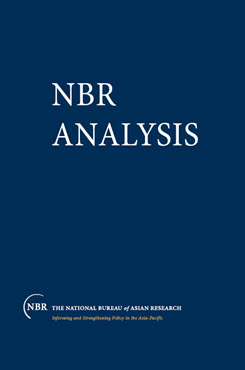Central Asia's Strategic Revolution
This essay describes the context within which Central Asia’s strategic revolution has occurred. Even before September 11, Central Asia was undergoing a profound strategic transformation. Since then, however, this transformation has accelerated and intensified to the point where it has become a genuine strategic revolution whose consequences are only beginning to be discerned. [1]
For the first time in history, U.S. naval and air–based military power has successfully been brought to bear in lasting fashion against Central Asian forces and targets. The demonstration of America’s capability to project military power into Central Asia through joint and combined action with allies prefigured the recent events in Iraq. This development represents a quantum leap from the types of external and internal military capabilities previously deployed in or around the region, and which were an instrument of the great power and regional rivalries known as the new great game. Moreover, this demonstration of America’s power projection capabilities has also contributed to a counter–trend by indigenous forces intended to deny the United States or other powers access to Central Asia and adjoining theaters.
Observers tended to greatly exaggerate Central Asia’s strategic importance before September 11. Numerous commentators, often having a material interest in policy decisions, proclaimed on rather shaky grounds that Central Asia was a vital U.S. security interest. Despite this region’s undoubted importance, this hype was unfounded. Likewise, there was good reason to argue that such statements risked making unsustainable promises and policies.
However, all that disappeared on September 11, 2001. Today, U.S. officials acknowledge that Central Asia’s importance as a strategic theater is not just due to its vast energy holdings, and they envisage a long–term, even permanent, relationship with Central Asia that was inconceivable before September 11. [2]
Even then, Central Asia’s strategic significance stemmed not only from energy but also from its proximity to major Eurasian powers such as Russia, Turkey, Iran, China, India, and Pakistan. [3] Once global terrorism originated there, the region’s importance became visible to everyone. Thus, it is not surprising that the peacekeeping force for Afghanistan is an unprecedented extra–European mission for NATO. Nor is it surprising that NATO’s Prague summit in November 2002 showed heightened interest in Central Asia and overtly buried the notion that Central Asia was inherently out of area and thus beyond its consideration.4 Moreover, Russia and China have approved this NATO mission and Russia wishes to be formally associated with it.5 Similarly, Russia…
[1] The views expressed in this essay do not in any way represent those of the U.S. Army, Defense Department, or Government.
[2] A. Elizabeth Jones, Assistant Secretary for European and Eurasian Affairs, “U.S.-Central Asian Cooperation,” testimony before the Senate Foreign Relations Committee, Subcommittee on Central Asia and the Caucasus, Washington, D.C., December 13, 2001, http://www.state.gov .
[3] Stephen Blank, “The United States and Central Asia,” in Roy Allison and Lena Jonson, eds., Central Asian Security: The New International Context, Washington, D.C. and London: Brookings Institution Press and the Royal Institute of International Affairs, 2001, pp. 127–151.


